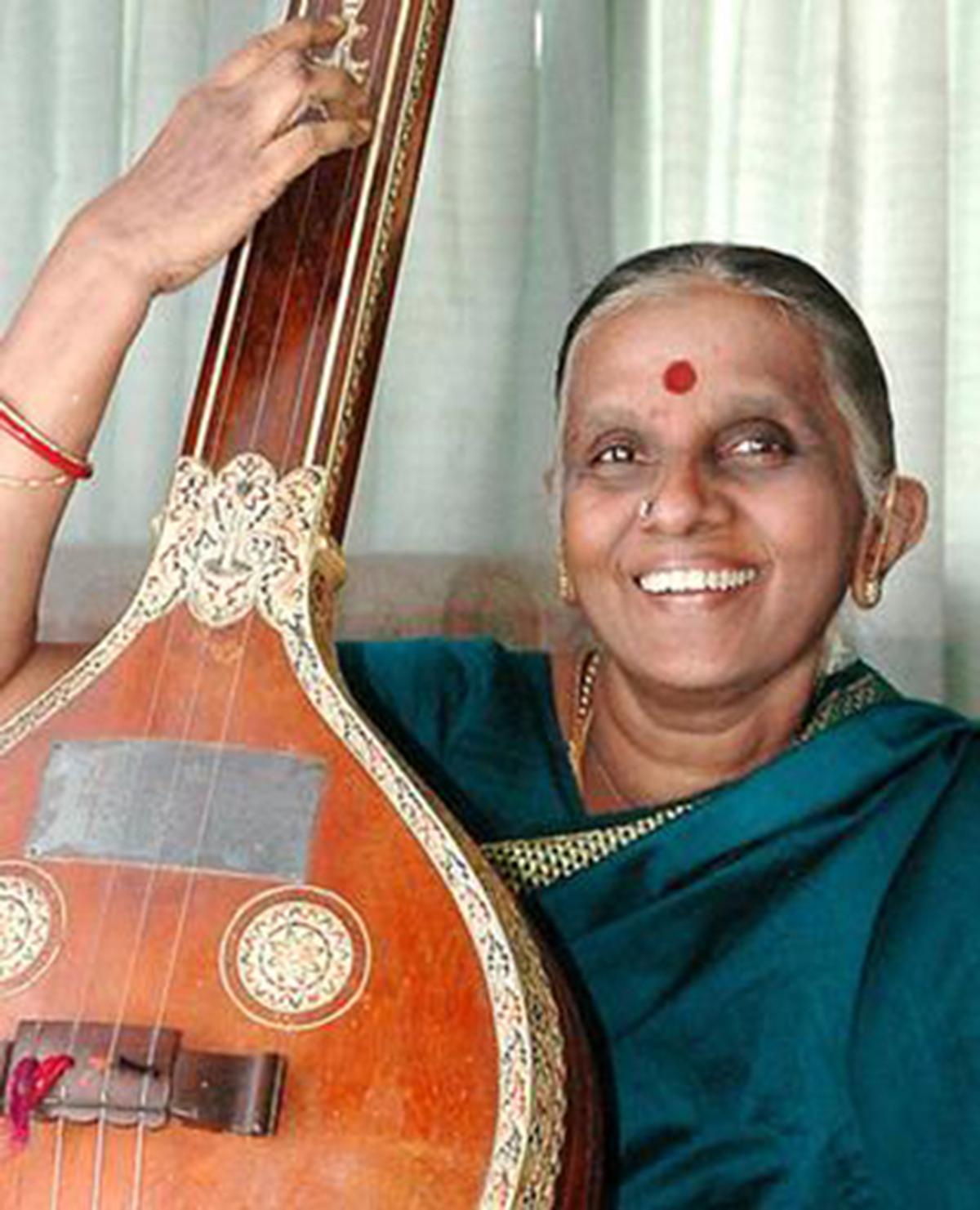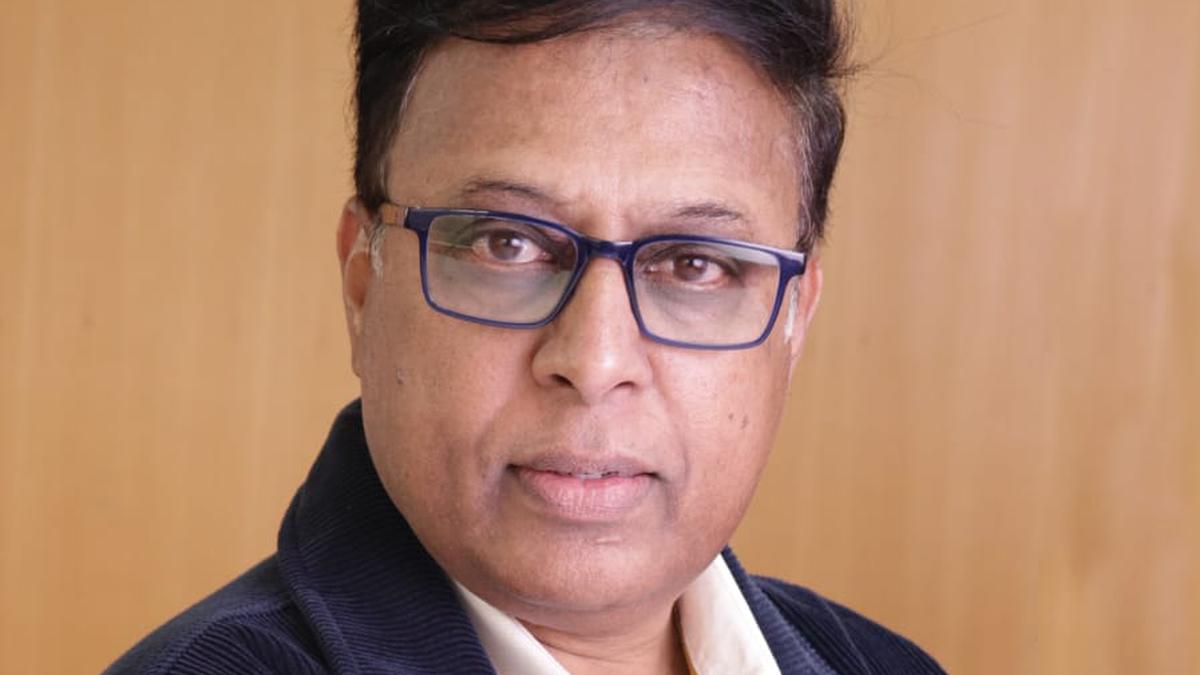The never-ending thirst for learning, assimilating, and adapting that which is good and valuable, along with her eternal passion for music, has made Suguna mami, as I fondly call her, an affectionate and exceptional guru. A first-generation musician in her family, Suguna mami’s passion for teaching is inspired by her illustrious gurus. She began learning music at the age of eight from P.K. Rajagopala Iyer (a disciple of Tiger Varadachari) at Ambattur in Chennai. He kindled her passion for music by teaching kritis and Bhairavi Ata tala varnam, as she could grasp it well. When her family moved to Raja Annamalai Puram, she joined R.R. Sabha’s music school in 1954. The teaching here followed a well-structured syllabus.
Suguna mami was admitted directly to the fourth-year category at the kriti level. The eminent teachers were B. Rajam Iyer, Srinivasa Iyengar, Kumbakonam Sankaran, A.S. Panchapakesa Iyer, and Kalpagam Swaminathan. She continued here till the advanced level, and was deeply influenced by the teaching methodologies of gurus such as A.S. Panchapakesa Iyer.
Guru Mudikondan Venkatrama Iyer was one of the teachers, under whome Suguna Varadachari learnt when she joined The Music Academy’s Teacher’s Training course.
| Photo Credit:
The Hindu Archives
After SSLC in 1960, she joined the Teacher’s Training course at The Music Academy, where she was fortunate to learn from veterans such as Jayamma of Dhanammal school and Mudicondan Venkatarama Iyer. With this strong foundation and the mind to pursue her musical journey, Suguna mami joined a three-year diploma ‘Sangita Vidhvan’ course at the Central College of Music in 1961.
Musiri Subramania Iyer was the Principal while the faculty included T. Brinda, Budalur Krishnamurti Bhagavatar, Kalyana Krishna Bhagavatar, Devakotta Narayanan, and later K.V. Narayanaswamy, T.M. Thyagarajan, and T.R. Subramaniam. There were 25 to 30 students, and Musiri Subramania Iyer would handpick only five students to sing the niraval or kalpanaswaras after him, and Suguna mami was one of them.
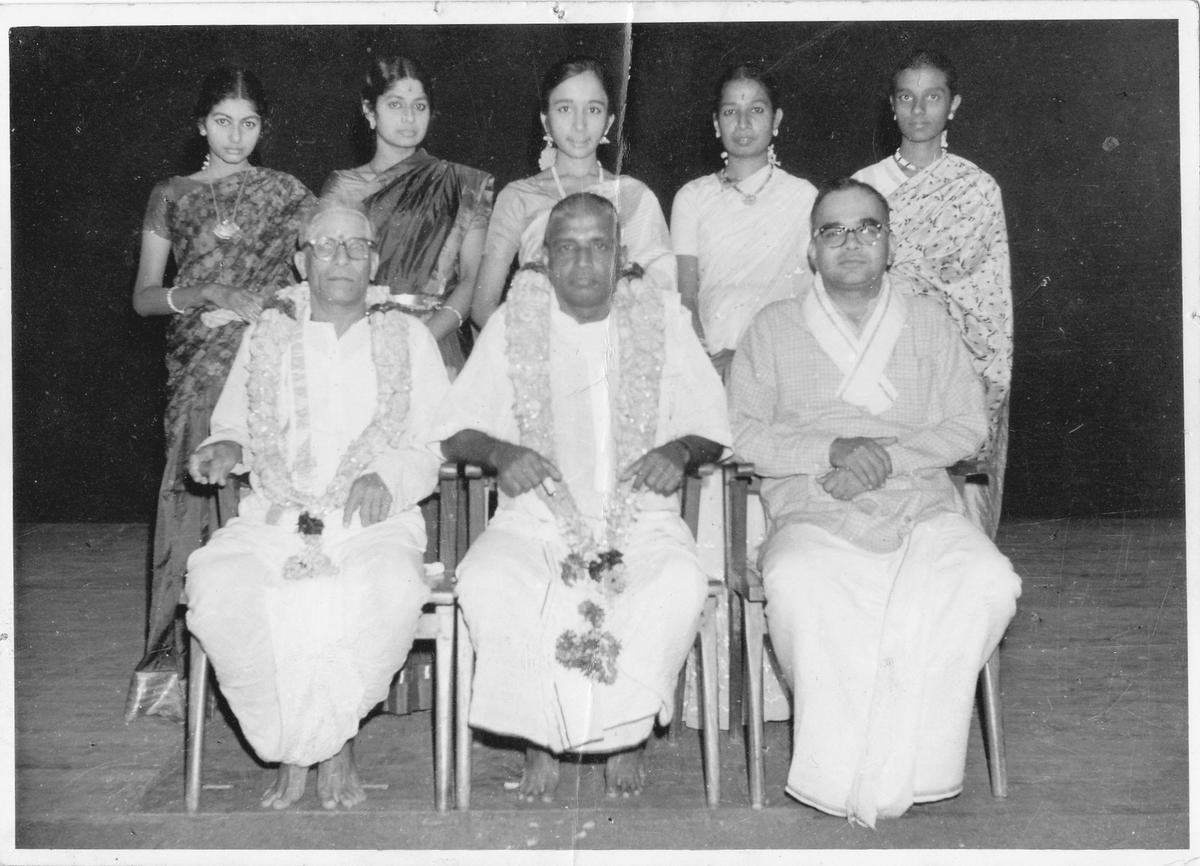
Again, in another instance, Musiri Subramania Iyer had to send a few students to sing the prayer at a function presided over by Pandit Jawaharlal Nehru. Suguna mami was the only one selected from the college, along with Bombay sisters and Padmaja, who were learning privately from Musiri under the scholarship scheme. This marked the beginning of Suguna mami’s association with Musiri Subramania Iyer.
Meanwhile, she started taking private classes for the neighbourhood children. She had equipped herself well by the age of 20. This was when she took part in The Music Academy and Tamil Isai Sangam competitions, winning two tamburas. She soon became an AIR-graded artiste, but was unable to attend the Radio competition finals.
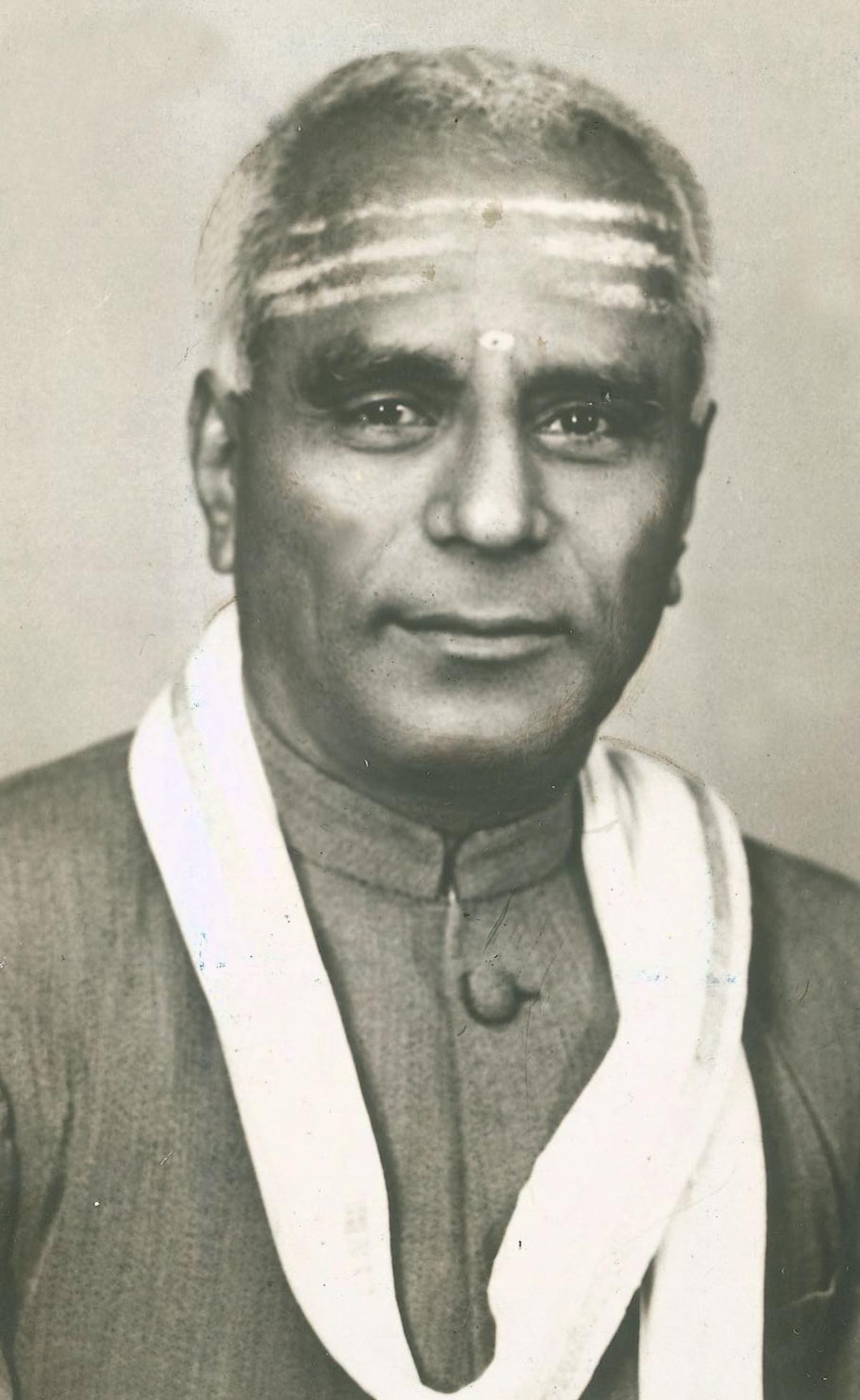
Guru Musiri Subramania Iyer.
| Photo Credit:
The Hindu Archives
In 1967, after getting selected for the CCRT scholarship scheme, she came under the direct tutelage of Musiri Subramania Iyer. Her music was nurtured and polished well under his guidance. Classes were held almost every day for about three to four hours. He used to begin with a small kriti, before moving on to a big kriti like ‘O Rangasayi’ (Kamboji) and would start niraval and swaras the same day, teaching raga bhava through them. The kriti would be sung in class repeatedly for many days till the disciples got it right. This intense training made the trio —– Suguna Varadachari, Suguna Purushothaman and Mani Krishnaswami — sing all they learned under Musiri precisely the same way when they performed together for his centenary year celebrations.
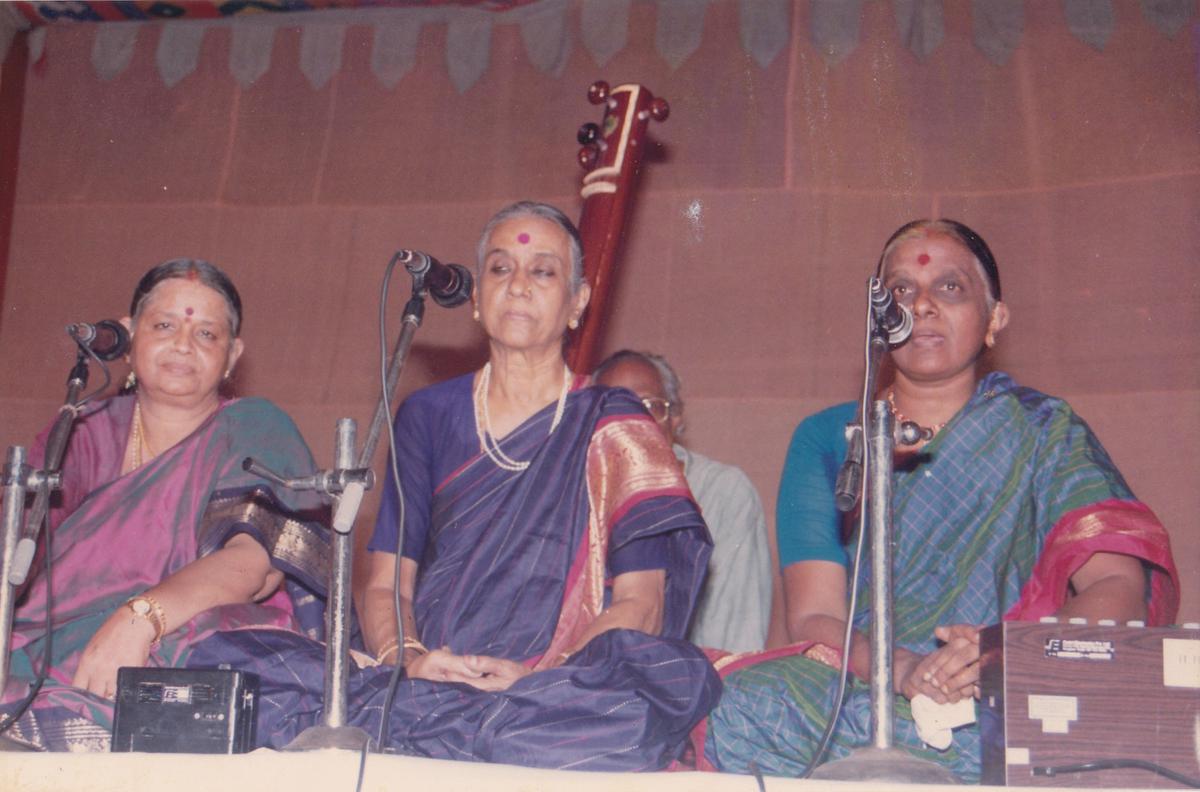
Suguna Varadachari with Suguna Purushothaman and Mani Krishnaswami.
| Photo Credit:
Photo courtesy: Aishwarya Shankar
Suguna mami had a long gap in learning after training under Musiri Subramania Iyer.
In 1984, not satisfied with what she knew, she joined Calcutta K.S. Krishnamurthi to learn more. Around the same time, she joined Madras University as a faculty. Old students and co-faculty of the university rate the next 20 years as the golden period. Suguna Mami was patient, sincere, and dedicated to teaching, despite having students of all levels. She was ready to adapt and implement anything for the benefit of students. She recorded songs along with the electronic tala-metronome as it made learning easy for distance education students.
As for manodharma, Suguna mami recorded the raga alapana in three durations — 1 – 1 ½ minutes, three to four minutes, and six to seven minutes so that students of all levels could understand the raga. She did not believe that concert performance and teaching alone should be a musician’s goal. Instead, she enhanced her knowledge by involving herself in the study and analysis of all facets of music. After her retirement, Suguna mami started a full-fledged one-to-one teaching and successfully produced many promising young artistes. She is a complete musician, who interprets music by referring written resources and oral tradition. After making every composition her own, based on her thought process, she makes detailed documentation of what she has learned.
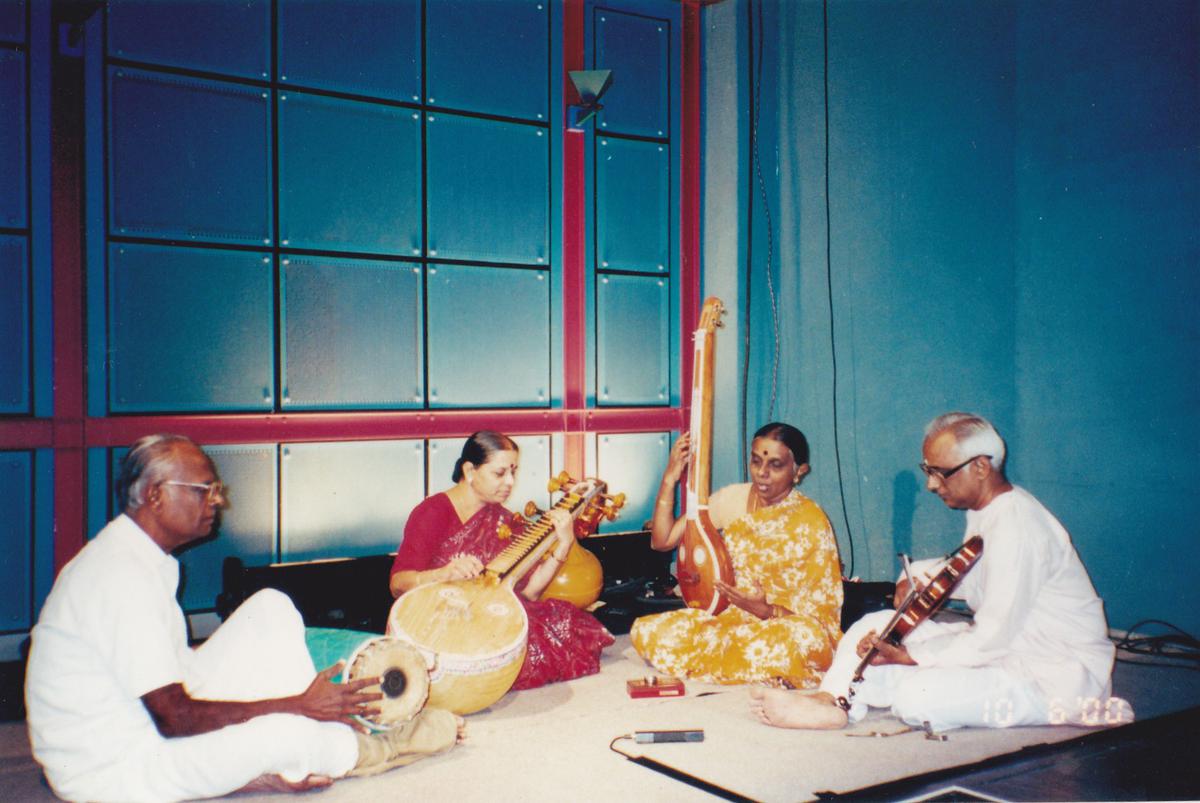
Suguna Varadachari accompanying R.S. Jayalakshmi.
| Photo Credit:
Photo courtesy: Aishwarya Shankar
In the 1990s Suguna mami adapted herself to the technological facilities and began teaching, first over a landline phone, then on Skype, and now on Google Meet and Zoom for students outside Chennai. She also teaches at the Music Academy’s Advanced School of Music.
Sunaadalahari School of Music was started in 2016 under her guidance and mentorship. She meticulously framed the syllabus for various levels of students besides teaching advanced lessons through Shrutilahari Masterclass.
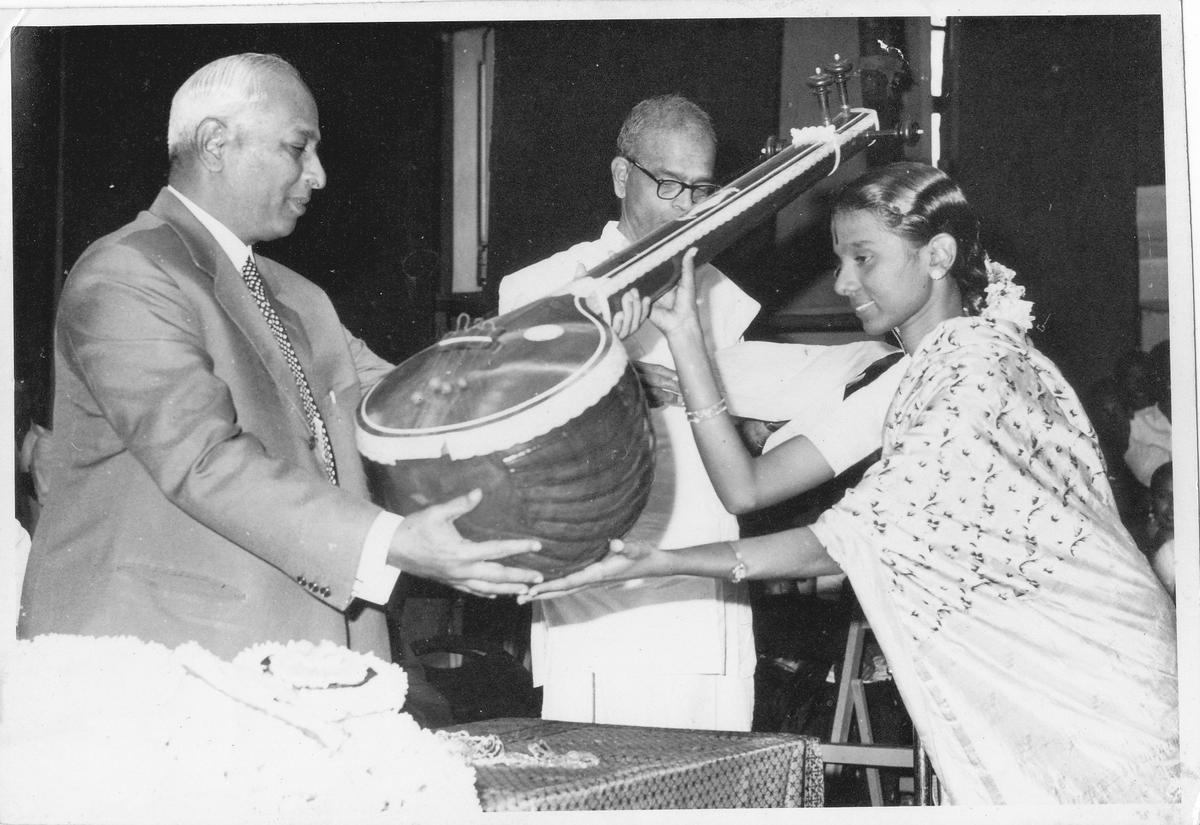
Like her guru, while teaching manodharma aspects, she sings individually for every student, even in a Zoom session. Currently, more than 50 students are being trained under her at Sunaadalahari.
She is that rare guru, who attends the performances of her students to know their progress and help them reach better heights.
The writer, a young vocalist, is the disciple of Suguna Varadachari.


